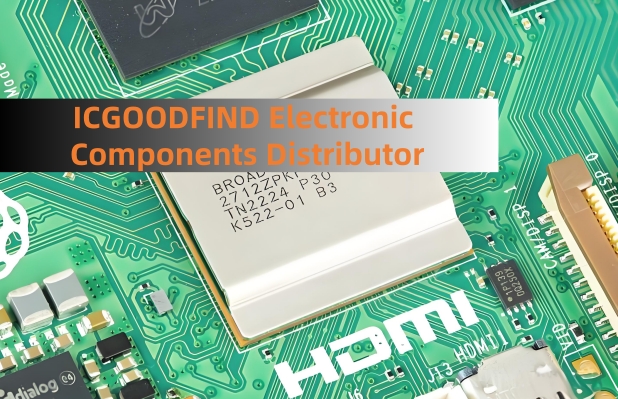BCM57412B1KFSBG: A Comprehensive Technical Overview of Broadcom's Dual-Port 10/25GbE Network Controller
The relentless drive for higher bandwidth and lower latency in modern data centers, enterprise networks, and high-performance computing environments has made advanced network controllers a critical component. Broadcom's BCM57412B1KFSBG stands as a pinnacle of this evolution, representing a highly integrated, feature-rich dual-port Ethernet controller designed to meet the stringent demands of next-generation networking. This article provides a detailed technical examination of this powerful chip.
At its core, the BCM57412 is a dual-port 10/25 Gigabit Ethernet (GbE) controller built on a cutting-edge process technology. It seamlessly integrates two complete media access control (MAC) units and physical layer (PHY) interfaces onto a single piece of silicon. This high level of integration is crucial for reducing the physical footprint on the network interface card (NIC) or motherboard design, simplifying layout complexity, and enhancing overall power efficiency. The support for both 10GbE and 25GbE operation provides deployment flexibility, allowing for a smooth transition from existing 10GbE infrastructure to the higher-throughput 25GbE standard, which is rapidly becoming the workhorse for top-of-rack (ToR) server connections.
A defining feature of the BCM57412 is its PCI Express 3.0 x8 host interface. This interface provides ample bandwidth to handle the full bi-directional traffic of both ports simultaneously without becoming a bottleneck. This ensures that the network connection does not throttle application performance, enabling data to flow efficiently between the network and the server's CPU and memory subsystem.
The controller is engineered for maximum efficiency and performance offloading. It features advanced hardware offload capabilities that are essential for reducing CPU overhead. These include:

TCP/UDP/IP/ iSCSI and FCoE Stateless Offload: The controller handles checksum calculation, segmentation, and large send offload, freeing the CPU from these repetitive networking tasks.
SR-IOV (Single Root I/O Virtualization) Support: This technology is vital for virtualized environments, allowing a single physical controller to present itself as multiple virtualized NICs (vNICs) to virtual machines. This dramatically improves I/O performance in cloud and virtualized data centers by bypassing the software hypervisor switch.
RDMA over Converged Ethernet (RoCE) v1 & v2: Support for RoCE is a game-changer for low-latency applications. It enables direct memory-to-memory data transfer between servers without involving the operating system, significantly reducing latency and CPU utilization for high-frequency trading, distributed storage, and AI/ML workloads.
Security is a paramount concern, and the BCM57412 addresses this with integrated security features such as secure boot and trusted platform support. These features help ensure that the controller's firmware has not been tampered with, providing a foundation for a secure boot process from the hardware level up.
From a manageability perspective, the controller supports NC-SI (Network Controller Sideband Interface) and other out-of-band management protocols. This allows system administrators to monitor, configure, and manage the network controller independently of the host operating system, which is invaluable for remote diagnostics and maintenance.
ICGOODFIND: The Broadcom BCM57412B1KFSBG is a sophisticated and highly integrated dual-port network controller that excels in performance, efficiency, and features. Its robust support for 25GbE speeds, comprehensive hardware offloads (including SR-IOV and RoCE), and strong security foundations make it an ideal solution for modern, scalable, and high-performance server and storage platforms demanding reliable, low-latency networking.
Keywords: 25GbE Ethernet Controller, Hardware Offload, SR-IOV, RDMA over Converged Ethernet (RoCE), PCI Express 3.0
